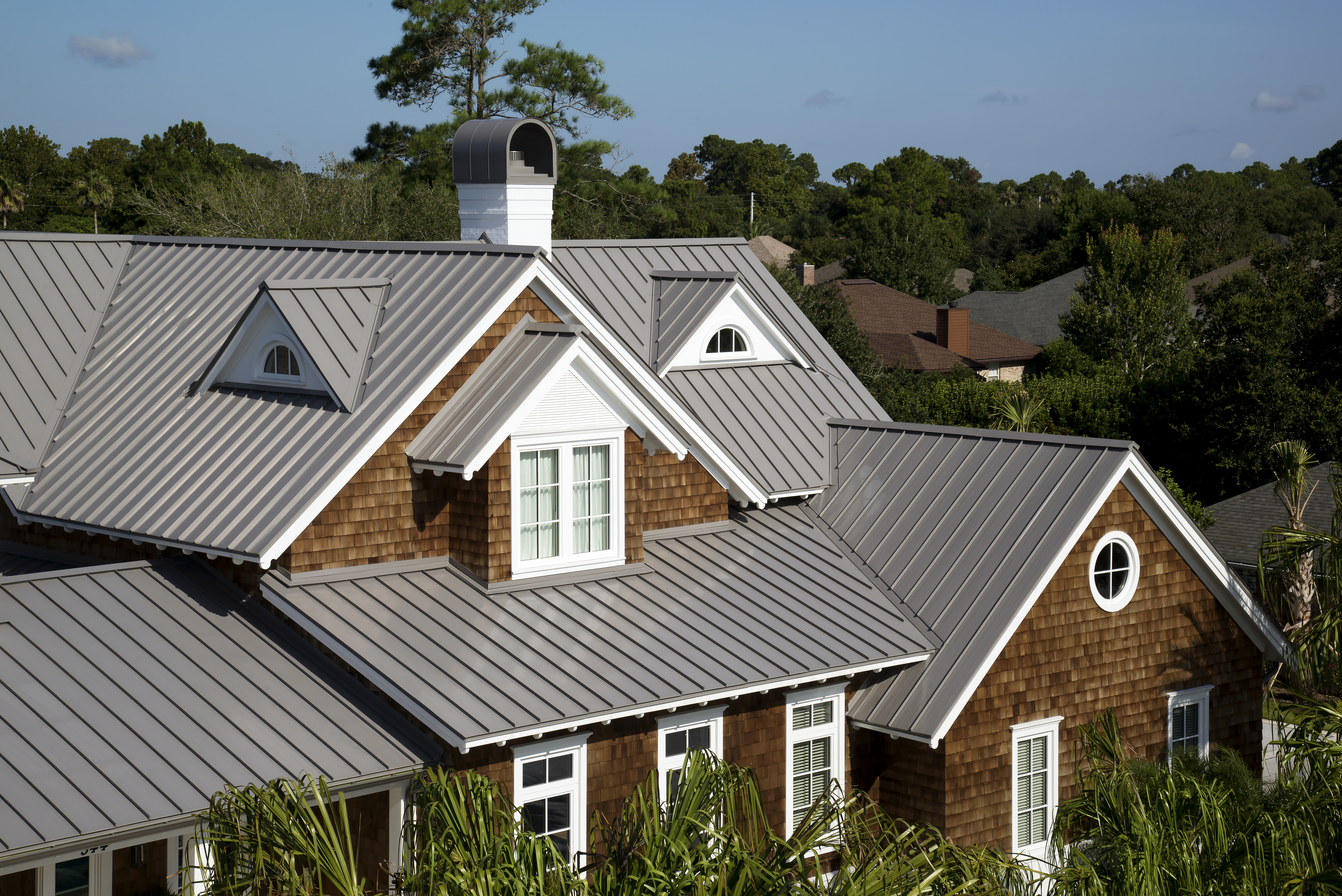Taking on a sustainable building project brings its own set of objectives and challenges for builders. From meeting green building requirements to minimizing waste and designing a structure that conserves energy, there are many factors to consider. To help reach these goals, today’s builders are turning to metal as a building material for its many sustainability benefits.
For one, the recyclability of metal building materials makes them a sustainable option. Christian Zimprich, Marketing Manager for Coil Coatings at Sherwin-Williams, said not only is the recyclability of metal advantageous for the environment, but it also offers cost savings.
“Virtually all steel in the U.S. has recycled content in it at a pretty high level, because it's actually lower-cost to incorporate recycled material than making it only from ore. Unlike a lot of material that costs money to recycle, this is actually a savings,” he said.
Along with recyclability at the end of its useful life, metal is also an inherently long-lasting material. This means metal components will perform on buildings for decades with little maintenance or need to replace them.
This durability allows metal to withstand harsh weather conditions like hailstorms and hurricanes, especially when it comes to roofing. While other materials can be easily damaged, metal components can hold a structure together and maintain water tightness through the increasingly extreme weather events seen today.
Opting for metal building materials also opens up an array of options for metal coatings with enhanced sustainable formulas. Christian Zimprich, Marketing Manager for Construction and Architectural Products at Sherwin-Williams, said these products enhance the durability of the metal they’re placed on.
For example, Sherwin-Williams’ Fluropon line of 70 percent PVDF coatings are designed to last decades while maintaining color consistency. Zimprich said Fluropon test panels at their facility in Fort Myers, Florida are going on 60 years of resisting the elements while maintaining film integrity.
Among the advantages of metal coatings is that many have been developed with solar-reflectivity in mind. Not only can reflective coatings help mitigate the heat island effect in cities, but they offer cost advantages to the building owner from reduced cooling needs.

Builders can also make positive impacts and meet sustainability requirements by choosing products made using biorenewable resources. Sherwin-Williams has developed coatings that utilize biorenewable sources, expanding the sustainable profile of the finished product.
The strength of metal combined with durable coatings optimized for the elements, helps to increase the longevity of the final building product decades into the future. A focus on the need for long product life cycles is growing in the industry, thanks to increased interest in sustainable building. To back up claims of sustainability and provide scientific evidence of a product’s environmental impacts, companies like Sherwin-Williams are performing Life Cycle Assessments (LCAs) to help builders make informed choices.
LCAs take into account everything from raw materials, manufacturing, packaging, transportation, use and disposal to assess the overall environmental impact of a given product. After performing an LCA, Sherwin-Williams can often produce an Environmental Product Declaration (EPD) that transparently states the findings. Green building organizations like LEED use these EPDs to verify the sustainability profile of different types of construction products to help builders determine which are eligible to achieve certification.
As for the future of metal and metal coatings, Zimprich said he sees plenty of room for growth given its many advantages as a building material. Beyond the formability of metal and the infinite ways it can be molded and shaped, metal is especially advantageous for its inherent sustainability benefits.






